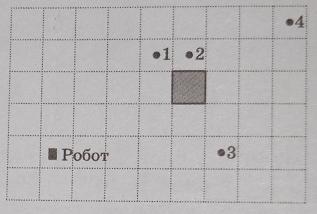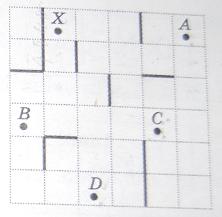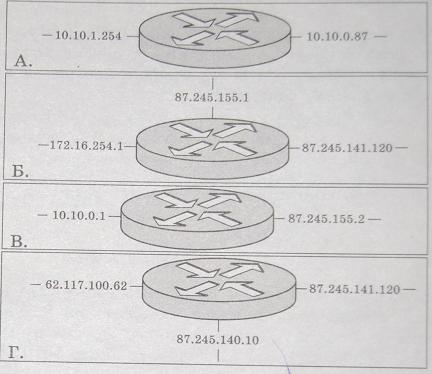Are you ready to pass the exam on computer science?
A year ago, I already wrote about the tasks of the exam on computer science. They were complex, sometimes non-ITishnie, provoked mixed reactions and quite interesting discussions.
Computer science is taught in the amount of 1 lesson per week, 7.5 minutes are given for the task. The majority of schoolchildren have very superficial knowledge, and it is generally difficult to speak about algorithmic thinking, the it-outlook and practical experience in using information technologies.
New year, new tasks, new questions for them.
Exercise 1
The task is very interesting, try to solve it, estimating the time and number of attempts. In the answers, point 4 is indicated. Let's see if you can get this answer.
Task 2
Tell me, what do you mean by the term "search engine"? After reading the task, I had two versions: Yandex / Google or a database with a SQL engine. Neither option, as far as I can tell, this “query language” is not close.
In addition, the syntax is generally controversial (comma, brackets, characters of logical operators, Cyrillic without quotes).
Probably, it means a certain “spherical search system in vacuum”, the working conditions in which it is proposed to be thought out.
Your version of the answer?
Task 3
The task is interesting because of the slightly confusing wording and uncertainty of the behavior of the robot in case of its stumble on the wall. In the condition and comments - not a word.
Task 4
How many solutions do you see? And how much should a schoolboy see?
Task 5
Do you think this task is close to the realities of the SCS? By the way, from which it follows that the subnet mask exactly 255.255.255.0 is unclear. Without this assumption it is generally unknown how to solve.
Task 6
Schoolchildren are not taught RGB-model and html-tags. If we use the information from the task, then we must also figure out what color will be in the mixture. For example, I am not sure that I know the correct answer. And you? Just do not open the browser or image editor, on the exam there are none.
The general impression about the training tasks (the yellow book of the Eksmo publishing house) by the authors of Samylkina and Ostrovskaya: too many typos, distortions in the topics of the questions, ambiguous wording. Many questions were baffled and forced not to solve the problem, but to guess what the author meant.
It seems to me that testing students for such tasks still does not provide an adequate assessment of their knowledge of school informatics.
Computer science is taught in the amount of 1 lesson per week, 7.5 minutes are given for the task. The majority of schoolchildren have very superficial knowledge, and it is generally difficult to speak about algorithmic thinking, the it-outlook and practical experience in using information technologies.
New year, new tasks, new questions for them.
Exercise 1
Artist Robot can move one cell up, down, right and left of the field on which the treasure is located. The robot moves if there are no walls in front of it.
The robot performs the following algorithm.
')
What point will be in the path of the robot?
The task is very interesting, try to solve it, estimating the time and number of attempts. In the answers, point 4 is indicated. Let's see if you can get this answer.
Task 2
In the search engine query language, the “!” Sign in front of a word means that the word should be searched for in the specified form. There are search queries that are simultaneously issued in the same search engine. Arrange them in ascending order of the number of documents found:
A. Airplane, airship or train to! Of Moscow // scored after the space and before the word "Moscow", the editor Habra teaches us punctuation, making it difficult to write tasks as they are
B. Airplane, airship or train to Moscow
B. (Airplane | airship | train) & (Moscow)
G. Airplane & Airship & Train & Moscow
Tell me, what do you mean by the term "search engine"? After reading the task, I had two versions: Yandex / Google or a database with a SQL engine. Neither option, as far as I can tell, this “query language” is not close.
In addition, the syntax is generally controversial (comma, brackets, characters of logical operators, Cyrillic without quotes).
Probably, it means a certain “spherical search system in vacuum”, the working conditions in which it is proposed to be thought out.
Your version of the answer?
Task 3
The robot is similar to the robot from task 1. Select the point from which the robot began to move, if it stopped at point X, moving along the algorithm.
The task is interesting because of the slightly confusing wording and uncertainty of the behavior of the robot in case of its stumble on the wall. In the condition and comments - not a word.
Task 4
Arrange the IP address fragments in the correct order.
A. "8.76" B. "9.34" V. ".16" G. "16"
How many solutions do you see? And how much should a schoolboy see?
Task 5
The pictures show routers, each interface of which has its own IP address. Arrange them to get a route from 10.10.1.2 node
Do you think this task is close to the realities of the SCS? By the way, from which it follows that the subnet mask exactly 255.255.255.0 is unclear. Without this assumption it is generally unknown how to solve.
Task 6
To encode the background color of a web page, the attribute bgcolor = ”# XXXXXX” is used, where in quotes hexadecimal values of the intensity of the color components in a 24-bit RGB model are specified. What color will be on the page specified by the body tag bgcolor = ”# 808000”?
A. Brown
B. Gray
B. Dark red
G. Blue
Schoolchildren are not taught RGB-model and html-tags. If we use the information from the task, then we must also figure out what color will be in the mixture. For example, I am not sure that I know the correct answer. And you? Just do not open the browser or image editor, on the exam there are none.
The general impression about the training tasks (the yellow book of the Eksmo publishing house) by the authors of Samylkina and Ostrovskaya: too many typos, distortions in the topics of the questions, ambiguous wording. Many questions were baffled and forced not to solve the problem, but to guess what the author meant.
It seems to me that testing students for such tasks still does not provide an adequate assessment of their knowledge of school informatics.
Source: https://habr.com/ru/post/83388/
All Articles




